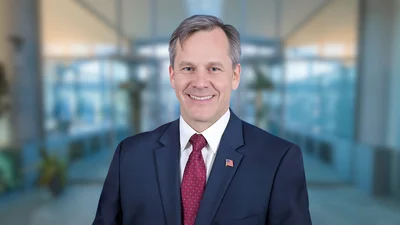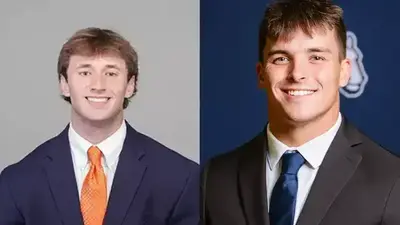Kalamazoo Community Foundation Offers Wide Range of Scholarships | Free CCO Credit
Kalamazoo Community Foundation Offers Wide Range of Scholarships | Free CCO Credit
The Kalamazoo Community Foundation offers more than $1.5 million in scholarships annually — and unlike some may think, they’re not just for the kids who aced every class.
“I think there is this perception that scholarships are just for people who graduated at the top of their class with a 1600 SAT score. We’re really working to change that narrative,” said Laura Galaviz, scholarship director for the foundation. “We have one where the donors actually say it shouldn’t go to a student who has a super high GPA because they want to invest in a student who shows potential but who perhaps didn’t rise to the top of the class.”
The Kalamazoo Community Foundation is almost 100 years old and its scholarship program has been part of its mission for about 70 of those years. And, within the last 50 years the organization has really built its scholarship holdings.
It now has about “61-ish” scholarships. Community members continue to generously add to the roster of available scholarships. Three new funds will be available in the spring of 2023 for distribution in the fall.
The application process begins Jan. 1 and continues through March 1, but students and their families can visit the foundation website, www.kalfound. org/scholarships, now to begin scoping out available scholarships. “There’s really something for everyone,” Galaviz said.
WHAT IS AVAILABLE
https://www.kalfound.org/scholarships
When she says there’s something for everyone, she likes to point to the George L. Disborough Trout Unlimited Research Grant. “I always think we’re not going to get anyone applying and every year there are at least two or three applicants,” she said.
There are scholarships for students who played different sports, for students who have lost a parent or spent time in foster care, for students from specific geographic areas. Galaviz’s goal is to disburse all of those scholarships every year.
“The only reason we wouldn’t give out a particular scholarship is if there were no eligible applicants,” she said.
One of the foundation’s newest and most innovative scholarships is its Emergency Scholarship Fund. Offered on a rolling basis throughout the year, it provides up to $1,000 for emergency educational Kalamazoo Community Foundation Promises a Wide Range of Scholarship Opportunities costs, such as books, holds on accounts, or a laptop that suddenly goes kaput.
Launched in August of 2021 to help students deal with financial crises caused by Covid, it was renewed with more funds by the foundation board this year.
“We just needed the responsiveness of this scholarship, because we know if a student has to take a semester off, the likelihood of them coming back drops significantly” she said. “Our intent is to help fill the need so students can stay enrolled and get their education.”
The Emergency Scholarship Fund committee meets every two weeks and once an application is approved, a check can usually be cut within days.
The foundation’s largest scholarship is the Remynse Scholarship, which provides significant renewable support based on student need for Kalamazoo County graduating seniors or college freshmen. It can be renewed for up to three additional years.
There are actually five scholarships that were created in the name of community leaders with ties to Kalamazoo Public Schools: former teacher and Kalamazoo County Commissioner Eva Ozier; Hillside Principal Dorothy Young and her husband, Curtis Young, a teacher; former KPS board trustee Duane Roberts; former English teacher Mildred McConkey; and former counselor Mary Ruth Robinson.
The Duane Roberts Scholarship is one of Galaviz’s favorites because it recognizes students for their participation in social justice, which was one of Roberts’ passions.
While 55 percent of the scholarships are need-based, 45 percent are not. Many are renewable, which provides some important stability for students, so they don’t need to wonder where they will find financial aid every year, and there are several scholarships designed to meet the needs of graduate students.
“That’s critical because students can’t get federal Pell Grants for graduate school. That falls off and you’re really left to your own devices,” Galaviz said.
EASIER THAN EVER APPLICATION
The key for finding out if you’re eligible is to apply, and the foundation has made that easier than ever.
For many years, students who were interested in applying for a scholarship had to read through the list of scholarships and to apply to each one separately.
But, in 2018, the foundation went to a universal application process. Students complete one application that includes about 20 “qualifier” questions that cover things such as extracurricular activities, leadership positions, academic interests, and family background. The applications are reviewed and then students are told which scholarships they may qualify for.
When the application process opens Jan. 1, students will find the process provides a lot of flexibility to accommodate busy schedules. “We’ve done everything we can to remove barriers to the application process.
We’ve extended the application window. You can go in and start an essay and come back to finish it later,” she said. There is less emphasis on standardized test scores, which the foundation acknowledges are highly inequitable. And, the dreaded essay question — is no longer something to dread. “Don’t be intimidated by those questions,” Galaviz said. “They’re really meant to help the committee to get a sense of who you are and how you see the world and what you plan to do.
There’s not an expectation for perfect grammar and perfect answers. It’s really about who you are. “We want students to think ‘maybe this is for me’ and to get people who haven’t traditionally applied to think about putting in an application.”
“Don’t be intimidated by those questions,” Galaviz said. “They’re really meant to help the committee to get a sense of who you are and how you see the world and what you plan to do. There’s not an expectation for perfect grammar and perfect answers. It’s really about who you are.
“We want students to think ‘maybe this is for me’ and to get people who haven’t traditionally applied to think about putting in an application.”
Original source can be found here.



 Alerts Sign-up
Alerts Sign-up